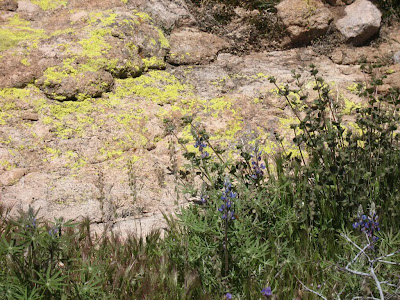And that was true. I have always loved the desert. One sits down on a desert sand dune, sees nothing, hears nothing. Yet through the silence something throbs, and gleams...”
'What makes the desert beautiful,' said the little prince, 'is that somewhere it hides a well...'"
-Antoine de Saint-Exupery
This is the third spring we've spent in Phoenix. Every year the desert becomes more and more beautiful to me, and this is my favorite time of year. What I love about the desert is that it forces you to look carefully, to really examine the topography. The beauty of the desert is subtle; it doesn't jump out at you like the beauty of a stunning mountain range or white sand beach. To really appreciate the desert's beauty you have to step back, narrow your scope, and examine your surroundings.
 Because of this, it's easy to take the desert for granted. The first year I lived here, I didn't even notice the subtle changes that take place throughout the year. It's easy to overlook the transformations that are constantly unfolding in the desert, which are actually quite dramatic. During our second year here in the Valley, I became more interested in our strange desert surroundings. I started to notice things that I hadn't seen before---the way that a desert mountain changes from a darker shade of brown in the winter to a mellow green in the spring, or the wildflowers that emerge along the highway in the spring and fall. The delicate yellow flowers of a palo verde, the green pods of a mesquite.
Because of this, it's easy to take the desert for granted. The first year I lived here, I didn't even notice the subtle changes that take place throughout the year. It's easy to overlook the transformations that are constantly unfolding in the desert, which are actually quite dramatic. During our second year here in the Valley, I became more interested in our strange desert surroundings. I started to notice things that I hadn't seen before---the way that a desert mountain changes from a darker shade of brown in the winter to a mellow green in the spring, or the wildflowers that emerge along the highway in the spring and fall. The delicate yellow flowers of a palo verde, the green pods of a mesquite.Of course, the cacti are what really characterize the desert landscape. Over the last few months, we've been learning all about the traditional uses for the cacti that you find here in Phoenix, and it is fascinating. For example, the short and stout barrel cactus was used as a thirst quencher for desert travelers. Desert natives used the cactus juices for making bread. And then there's the cryptic queen of the night, or night-blooming cereus, a strange desert plant that resembles an inconspicuous heap of spiky sticks for most of the year, only to burst into beautiful white blossoms when the time is just right. As with many things in the desert, this one is very easy to miss. Desert Indian tribes like the Tohono O'odham used the cactus roots as a preventive treatment against Type II diabetes, indigestion, headaches, respiratory ailments, and high cholesterol.
But the true king of the desert has to be the saguaro. I know it is perhaps an overused symbol of the desert, but I think that is for good reason. Saguaros are powerful. I remember driving into a saguaro forest for the first time and feeling like I was in another world. Recently we've been reading about the traditional customs of the Tohono O'odham and the special place of the saguaro in their tribal traditions. According to Food Plants of the Sonoran Desert, an excellent book for anyone who is interested in these things, the Tohono O'odham used the saguaro fruit for jam, syrup, dehydrated pulp, seed flour, chicken feed, oil, snack foods, wine, vinegar and snack foods. "Each month of the Tohono O'odham calendar is based on the phenology of the saguaro and progression of the seasons, rather than the sun and its equinoxes." In the spring months, the tribe had rituals to ensure a good saguaro harvest, and summer time marks the harvest. During the harvest months, they moved to "cactus camps" and the picking season lasted two to four weeks. The harvesting itself was strenuous and time-consuming; women would collect fruits with long poles made of dead saguaro ribs to knock the fruit of the top of the saguaros. Each woman collected about two basketfuls each day, and by the time the basket was full, it usually weighed about 88 pounds!
When I first came here I remember thinking that the desert was a strange, even unnatural place for a human dwelling. Maybe people weren't meant to live in such a harsh environment. The desert doesn't present itself as immediately friendly to an agrarian lifestyle. But after living here, things have taken on a new light. The desert has a world of potential, but it is hidden. It's difficult to see, and perhaps it will be hard to work with. The desert is like the dark night of the soul---seemingly harsh, dry, and empty, but resonating with life and sustenance if one sees it for what it truly is.




No comments:
Post a Comment